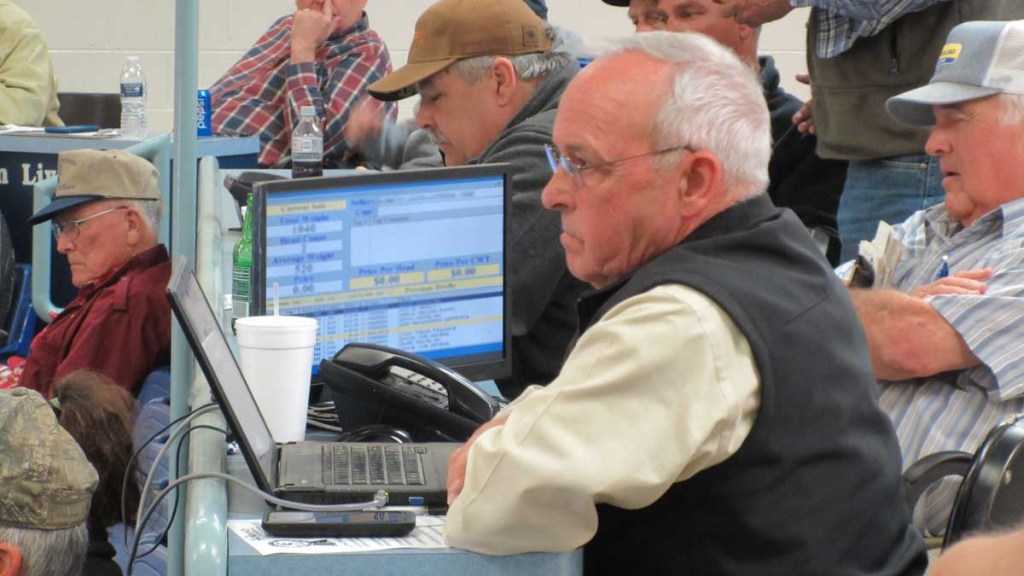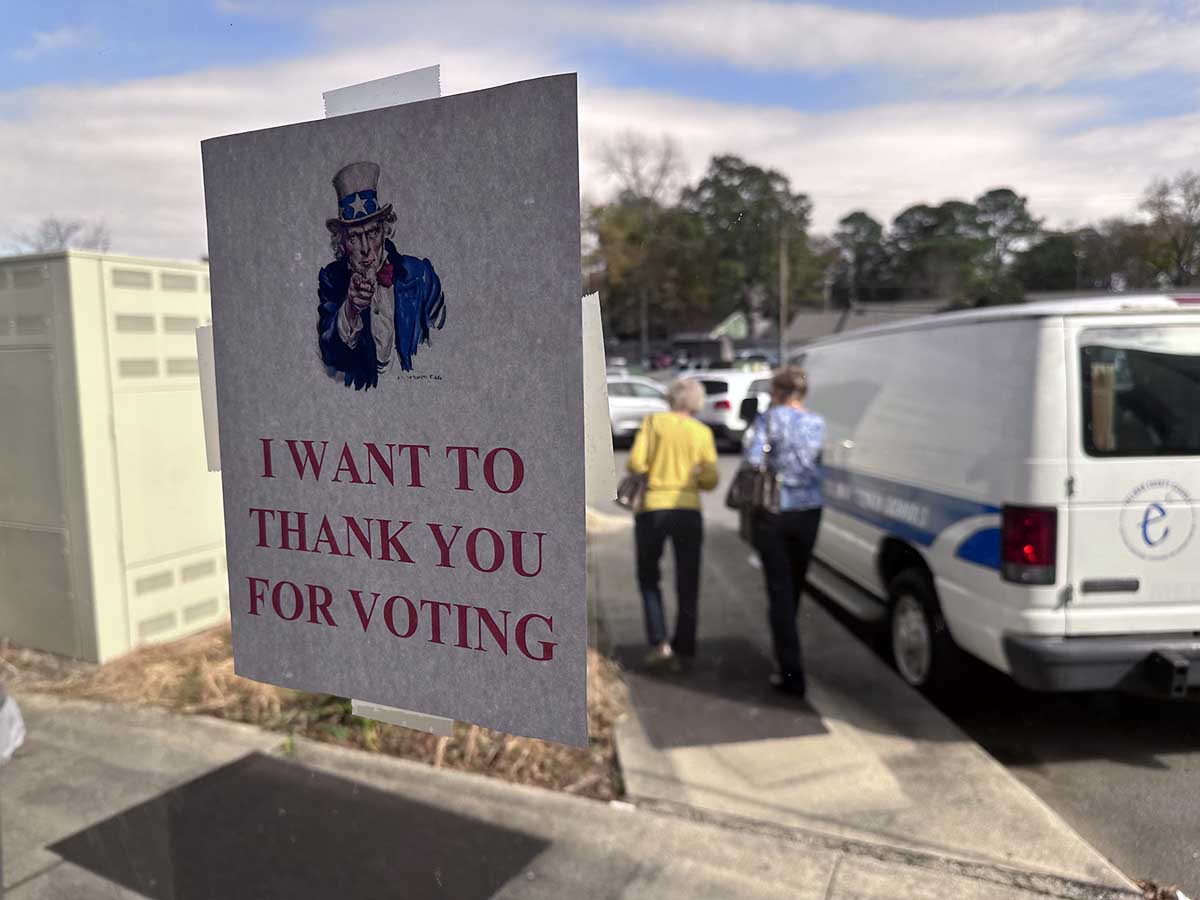Farmers remain hopeful despite drop in cattle market prices
Published 12:05 pm Friday, April 22, 2016

- Jim Dause, Richmond Blue Grass Stockyards manager, looks on as herds of cattle come through the auction ring during a cattle sell.
From 2013 to early 2015, U.S. cattle prices were at an all time high, and “cattle was king.” However, recent months have brought a drop in prices, but not in hope for Kentucky farmers.
While the drop in market prices hasn’t been a devastating one, the noteworthy decline linked to competitive meat sources, a reduced number of cattle headed for the meat market and cheap animal feed has still been a cause for concern among farmers and industry experts.
Trending
“If we look back at 2014 and the first half of 2015, it was the highest market for beef that we have seen on a per head bases.” Brandon Sears, Madison County, Kentucky Extension Agent for Agriculture and Natural Resources, said.
Sears said that near the autumn of 2015, for the cow/calf producers, the decline was in the hundreds of dollars per head.
“I would say it was a decline of over $300 in value per calf,” Sears, who attributed the 2014 local price spike to massive herd liquidations in the southern plains, said. “If you look a the typical supply and demand fundamentals, the supply demands got out of balance.”
Based on the latest statistics provided by Sears, Madison County is the second largest beef cattle producer in the state of Kentucky.
Madison County Magistrate and local farmer John Tudor attributed the 2014-15 price spike to the belief that cow herds had reduced, after cows used to produce calves had been sold to slaughter, which caused uncertainty in the market and prices to drive upwards.
“In the last eight to 10 months that theory was proven false,” Tudor said. “The demand has gotten lower after the spike in price and went on a decline over several months.”
Trending
According to Shayle Shagam, Livestock Analyst for the USDA’s World Agriculture Outlook Board, the fluctuation in the nation’s cattle markets in recent years is linked to a number of factors including an increase in other meat supplies and the current increase in cattle supplies.
Jim Dause, manager of The Richmond Blue Grass Stockyard, also identifies several reasons for the sharp price decline, one being the strength of the U.S. dollar. Dause said that while he has seen the market decline before, he has never seen it drop this drastic, this fast.
“Foreign countries can’t buy our product,” Dause said. “Our dollar is strong. We can import, but people can’t afford what we have to sell.”
Dause explained that now some farmers are buying less and some not at all, saying they will just sit back to see what happens. Dause said that now there are 4-5 percent more cows in the market than in 2014.
Another cause, according to Dause, was feed yards kept their cattle longer, because it was cheaper to feed them instead of buying new livestock. This led to the over supply of beef, whether it was because there were too many cattle or because they were too large after spending so many months in the feed yard. The price of corn had also come down, making it a cheap feed option, driving the weight of the cattle up as well, Dause said.
Tudor said that in December 2014, he had sold cattle for $1,400 per head, a vast difference to the $1,000 he received for the same cattle in December 2015.
“Farmers are definitely having to take a different perspective when purchasing farm inputs and thinking about long term farm revenue,” Sears said.
Sears agreed the market is still certainly weaker than it was a year ago, and Dause stated that the market has seen a 40 percent decrease in price since 2014.
“Prices are starting to soften this April,” Sears said, adding that typically the prices start to flatten in May, though he attributed the change this year to The Beef Cattles Future Market trending lower, as well as dips in the stock market.
“The cow/calf producer typically sees a 500 pound steer calf bring in $1.80 today,” said Dause. “I’m afraid come October or November, it will be $1.50-$1.60 pound.”
“In 1974, it dropped a third, but this dropped like a hammer,” Dause said. “Now we are selling 700 pound cattle for the same amount that we paid when they were 500 pounds. So we have gone to the expense and work of adding 200 pounds to them, and are just barely getting our money back.”
Sears said his hope was that beef producers, who had benefited a year ago from the high market, had made adjustments and set aside some profits for the rainy day, which just happens to be now.
“We ride cycles in the agriculture industry, so I feel like a lot of them prepared for the downs years,” Sears said. “I think the farmers are decently positioned as they go into this year.”
Tudor attributed part of the decline in demand to the negative portrayal of red meat in the media.
“Sometimes the news media portrays beef as not as healthy as other meats, when it really is,” Tudor said. “It’s like anything else, if you just eat it in moderation, it’s a good source of protein.”
Speaking to portrayals of beef and the rising popularity of other meats like pork and poultry, Shagam said that recent emphasis on grass-fed beef isn’t yet directly linked to cattle market prices. Shagam said that those consumers seeking grass-fed meat are still considered a niche market that don’t seem to majorly affect market prices overall.
Dause felt the price of beef at the store might also be a factor, citing it was currently cheaper for most families to purchase chicken or pork, and an improvement might be seen after store prices for beef become more affordable.
Despite the downturn in prices, Madison County farmers remain hopeful.
“Prices are slowly coming back this year,” said Tudor. “But it’s a slow climb. I think its part of farming, the ups and the downs. It fluctuates.”
Tudor said that farmers who are in it for the long haul would stay with their profession through the think and thin.
“It’s more positive than it was eight months ago,” Tudor added. “It’s on the upswing a little bit.”
The Richmond, Kentucky Register provided details to this story.





